Soil health and soil fertility in small-holder farming systems
We work using transdiciplinary and interdisciplinary approaches to understand issues surrounding soil health in small-holder farming systems in Africa and India. We work with farmers to better understand their barriers to improving soil health and soil fertility. This includes social, economic and environmental barriers such as lack of knowledge, low resource availability, and financial and market constraints. Determining interactions between declines in yields related to poor soil health and reduced soil fertility, as well as other social and environmental factors is critical; scientific insights into soil processes alone will not provide a complete picture of the status of smallholder farmers or lead to practical solutions.
Human population now exceeds 7 billion and unprecedented global food demand puts extreme pressure on agricultural and natural ecosystems. To meet the demands of a rapidly growing population, world food production doubled in 40 years, mainly through agricultural intensification. To date, agricultural intensification has depended on increased chemical inputs and water subsidies, with only minimal emphasis on sustainability. Globally, increased crop output has come via a combination of extensive and intensive means: cultivating more land (including marginal lands), reducing fallow periods and increasing crop density. While these methods result in short-term crop yield increases, they are not sustainable because arable land is finite and soils are degraded, leading to losses of soil fertility and biological processes that severely reduce production potential as well as negatively impacting the environment. Although global food production has increased 50% since 1960, population has increased by 250% and recent research raises concerns that many areas of the world, especially, Africa, will be unable to feed growing populations in the coming years as population reaches 2.2 billion by 2050.
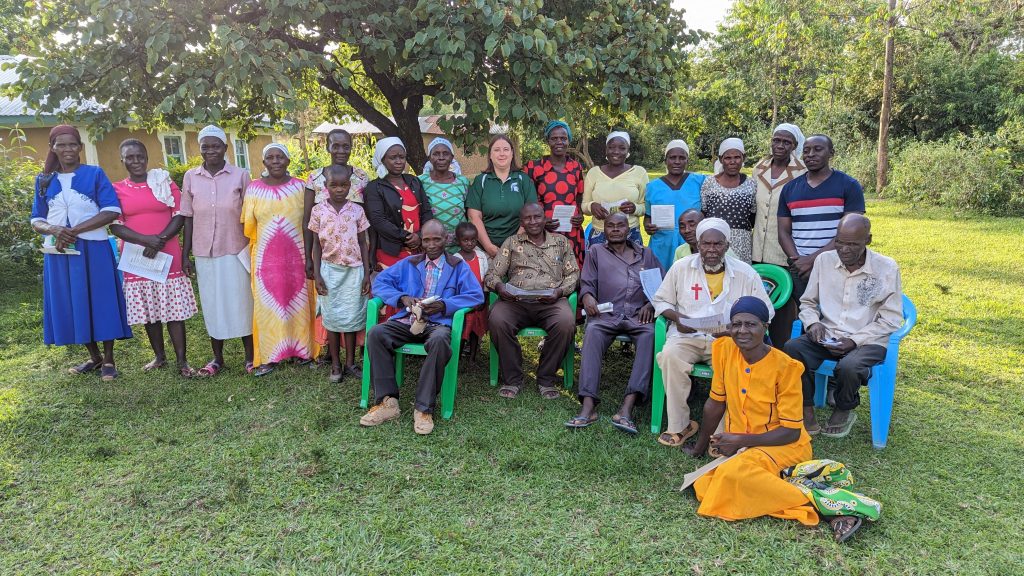
Soil Health
Soil is the keystone in building sustainable agricultural systems, providing a suite of services critical for environmental and human health and food security. Soil health is a valuation of a soil’s functional status in relation to specific soil services. Although the whole suite of services provided by a healthy soil are important, in the context of food security we often focus on soil fertility, which is the ability of soils to provide water and nutrients in support of plant growth. Increased demand for these soil services has led to soil degradation through erosion, pollution and over use. In particular, in tropical systems where many developing countries are found, soils are ancient and inherently fragile, such that deforestation, erosion, and vegetation removal associated with continuous cropping and agricultural intensification has led to large decreases in soil health. In fact, declines in soil health and concomitant declines in soil fertility are thought to be the leading constraints limiting agricultural production by smallholder farmers. Nevertheless, management practices aimed at improving soil health are implemented only sporadically due to limited resource availability, lack of knowledge, and cultural and financial constraints.
In Africa:
There is growing recognition of the role of soil health and increased use of both inorganic and organic fertilizers to achieve sustainable agricultural intensification in Africa. This growing recognition is exemplified by the Africa Union Commission’s convening of the Africa Fertilizer and Soil Health Summit in November 2023. In a current review conducted in preparation for the summit, we identify current “megatrends” that are influencing African farmers’ ability to increase their use of fertilizers and improve the health of their soils: rural population growth; urban population growth; reallocation of labour force from farm to non-farm; climate change; conflicts; and global technical innovation. The report identifies priority actions that will enable governments to effectively anticipate and proactively respond to these megatrends in order to effectively achieve the objectives of the Africa Fertilizer and Soil Health Action Plan. The report emphasizes that in some cases, African policymakers may “bend the curve” of these megatrends, to mitigate adverse effects that would otherwise occur in the absence of proactive government action or avoided entirely through appropriate pre-emptive action. It concludes that improving soil health is a crucial component of a resilient and sustainable food system globally and particularly in sub-Saharan Africa. Investing adequately in resilient and sustainable food systems today will insulate African governments and rural communities from incurring considerably greater social, economic and environmental losses in the future and at the same time hasten the continent’s development.
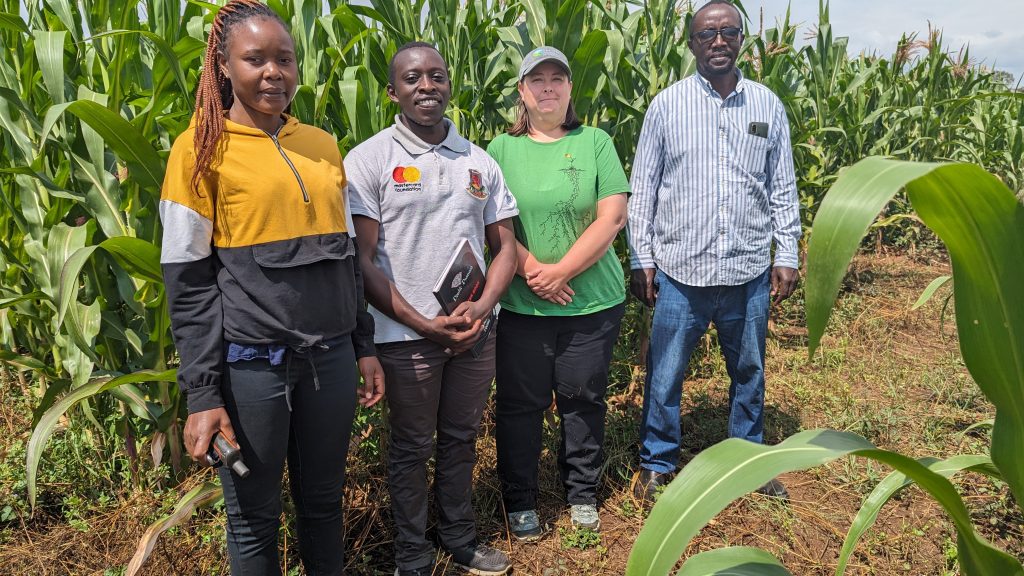
In India:
Karnataka state in India is home to 69,599,762 people, with an estimated 41% of the workforce dependent on agriculture. Within our study area in northern Karnataka, intensive sugarcane cultivation is common, with dozens of sugar processing and biorefinery facilities dotted across the landscape. Sugarcane production in Karnataka State represents 7.5% of sugarcane production (by weight) across all of India. Current, ‘actual’ yields in Karnataka continue to be less than ‘achievable’ yields, which results in a yield gap. This yield gap has been estimated at 33 t/ha, but given the observed sugarcane yields in Karnataka of 200 t/ha at a research center and up to 250-300 t/ha on-farm, both results coming from use of a combination of many technologies for yield improvement, suggests that the yield gap may be as high as 115-215 t/ha. This represents a significant loss of potential profits for farmers in Karnataka. The most likely cause of reported sugarcane yield declines, and the large yield gap, is a severe reduction in soil health due to continuous intensive agriculture in sugar cane production with limited adoption of soil health promoting management practices. Declines in soil health are accompanied by low soil fertility, and this coupled with insufficient nutrient replacement via fertilizer application can lead to much lower than expected crop yields. In order to increase sugar cane productivity and close the yield gap, we must understand the current status of the soils and be able to monitor soils continuously as practices are implemented to improve soil health and soil fertility. We are currently working to improve soil testing efforts to provide farmers with timely and accurate information that will help incentivize farmers to apply soil health promoting management practices.
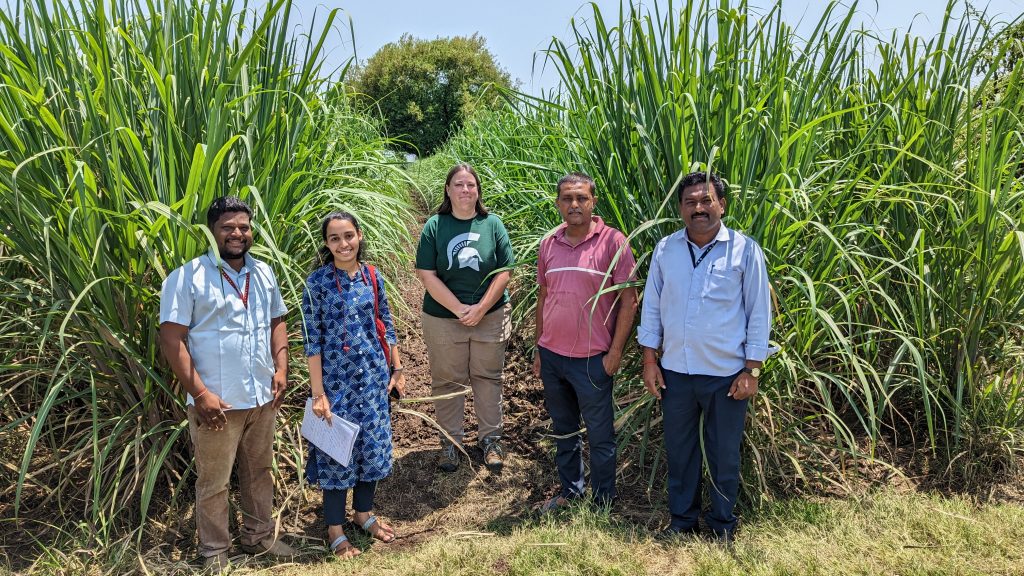
Barriers to soil sustainability, food security and biodiversity conservation in the Albertine Rift
Author: Lisa Tiemann
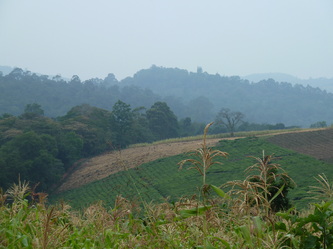 The goals of this research project are to determine 1) how interactions between socioeconomic and soil fertility factors generate unsustainable agricultural practices in Uganda; 2) how alarming trends of productivity loss might be reversed; and 3) how the reversal of productivity declines can be used to protect one of Earth’s most valuable biodiversity resources – the Albertine Rift including Kibale National Park. Using an interdisciplinary approach, the research integrates elements of ecology, soil and social sciences to link patterns of land use intensity with soil fertility and the socioeconomic barriers that inhibit sustainable farming practices around Kibale National Park in Uganda. I am tracking the impacts of soil fertility loss in Uganda by first compiling survey data for
The goals of this research project are to determine 1) how interactions between socioeconomic and soil fertility factors generate unsustainable agricultural practices in Uganda; 2) how alarming trends of productivity loss might be reversed; and 3) how the reversal of productivity declines can be used to protect one of Earth’s most valuable biodiversity resources – the Albertine Rift including Kibale National Park. Using an interdisciplinary approach, the research integrates elements of ecology, soil and social sciences to link patterns of land use intensity with soil fertility and the socioeconomic barriers that inhibit sustainable farming practices around Kibale National Park in Uganda. I am tracking the impacts of soil fertility loss in Uganda by first compiling survey data for 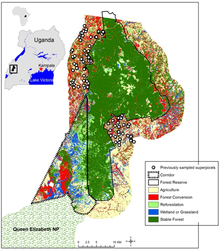 broad scale quantitative assessments of the effects of traditional land management practices as compared with perceptions about productivity and soil fertility in a spatially explicit manner. In addition to survey data, soil fertility will be defined by measurements of SOM, soil carbon, nitrogen, phosphorus and other micronutrients, pH, water holding capacity and microbial biomass. Then, I will integrate demographic factors, ethnicity, and risks, overlaid with land use and areas of actual declines in soil fertility. The project will also explore new paradigms in SOM formation and degradation to form a better understanding of
broad scale quantitative assessments of the effects of traditional land management practices as compared with perceptions about productivity and soil fertility in a spatially explicit manner. In addition to survey data, soil fertility will be defined by measurements of SOM, soil carbon, nitrogen, phosphorus and other micronutrients, pH, water holding capacity and microbial biomass. Then, I will integrate demographic factors, ethnicity, and risks, overlaid with land use and areas of actual declines in soil fertility. The project will also explore new paradigms in SOM formation and degradation to form a better understanding of 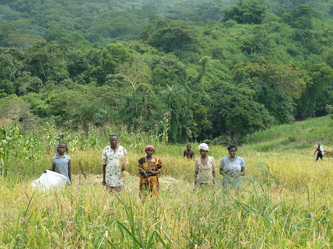 links between land use and soil fertility. Specifically, I am investigating the influence of land use intensity on microbial substrate use efficiencies and the production of extracellular polymeric substances (EPS) as factors controlling SOM dynamics, using a novel approach to characterize microbial EPS production in soils.  The integration of the resulting data will be useful in identifying hotspots for SOM declines and the concomitant socio-economic factors that may act as barriers in maintaining SOM and soil fertility.
links between land use and soil fertility. Specifically, I am investigating the influence of land use intensity on microbial substrate use efficiencies and the production of extracellular polymeric substances (EPS) as factors controlling SOM dynamics, using a novel approach to characterize microbial EPS production in soils.  The integration of the resulting data will be useful in identifying hotspots for SOM declines and the concomitant socio-economic factors that may act as barriers in maintaining SOM and soil fertility.
This research is in conjunction with the Population, Environment and Climate in the Albertine Rift project (http://pecar.unh.edu)
Articles written about this project:
http://www.unh.edu/news/releases/2012/oct/bp23soil.cfm
http://unh.edu/unhtoday/2012/10/fertile-mind
http://unh.edu/cie/newsletter/2013/spring/uganda-tiemann.html
http://colsa.unh.edu/article/spring-2013/sampling-soil-farther-afield?utm_source=insight&utm_medium=email&utm_campaign=Insight,%20Spring%202013

